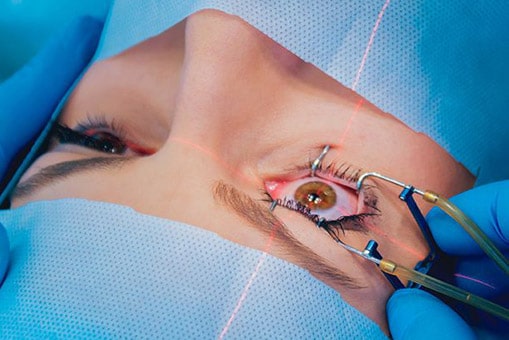LASIK laser eye surgery is usually painless. You may experience a feeling of pressure in your eyes during the procedure, but this may be unlikely.
Before your surgery, your surgeon will give you anesthetic drops to numb your eyes.
They’ll then use a small blade or laser to cut a flap in the outer layer of your eyes called the cornea. After that, they’ll use a laser to reshape your eyes. After your procedure, your eyes may:
- burn
- itch
- have the sensation like there’s something in them
You will be given a protective shield to keep you from rubbing your eyes or accidentally poking them. The shield also helps you avoid putting pressure on your eyes while you sleep.
According to the research Source, you may experience mild discomfort or pain after your surgery once the anesthesia wears off.
Potential complications that may cause pain
Like any surgery, laser eye surgery comes with a risk of complications. Some complications such as an infection or dislodged corneal flap may cause severe pain.
If you’re experiencing severe pain, you should contact your doctor immediately.
It’s important to avoid rubbing your eyes for about 1 week after your surgery, and follow the rest of your doctor’s post-surgery instructions to prevent complications.
The majority of people who get laser eye surgery stay awake during the procedure. The entire surgery usually takes less than 30 minutes.
The actual laser procedure usually takes less than a minute per eye. Anesthetic eye drops are preferred by surgeons over general anesthesia that puts you to sleep.
According to the American Society of Anesthesiologists, general anesthesia comes has risks and would increase the price of the surgery.
Although it’s rare, general anesthesia can cause some potentially life threatening side effects such as malignant hyperthermia, a condition that causes a fever and muscle contractions.
If you’re feeling anxious about your surgery, you may be offered a sedative such as valium to help you relax.





 Blurry vision can make it difficult for you to see finer details. Objects around you can lack sharpness, like the out-of-focus parts of a photograph. One of the main causes of blurry vision can be diabetes. Vision blurriness can change through the day and could be obvious or subtle. Depending on the cause, it can come quickly or slowly.
Blurry vision can make it difficult for you to see finer details. Objects around you can lack sharpness, like the out-of-focus parts of a photograph. One of the main causes of blurry vision can be diabetes. Vision blurriness can change through the day and could be obvious or subtle. Depending on the cause, it can come quickly or slowly.